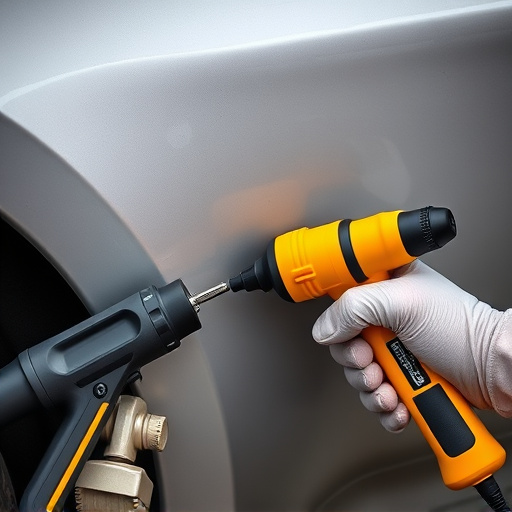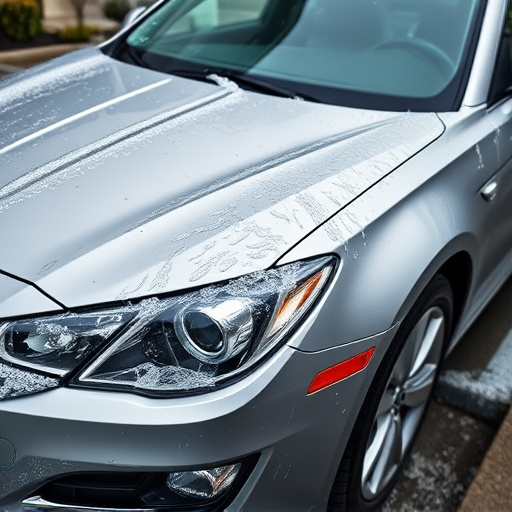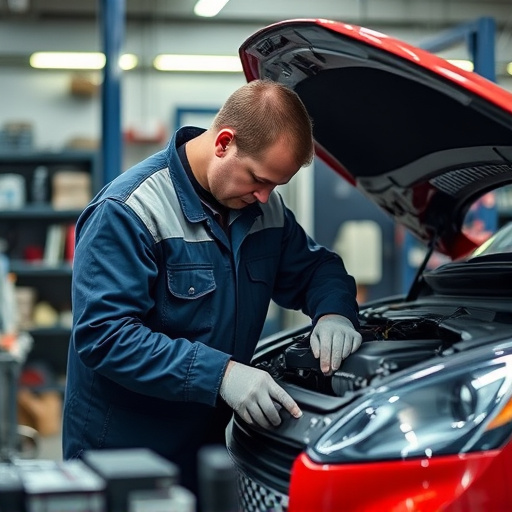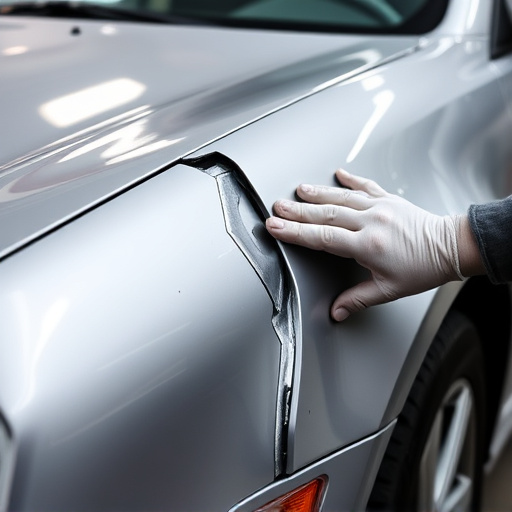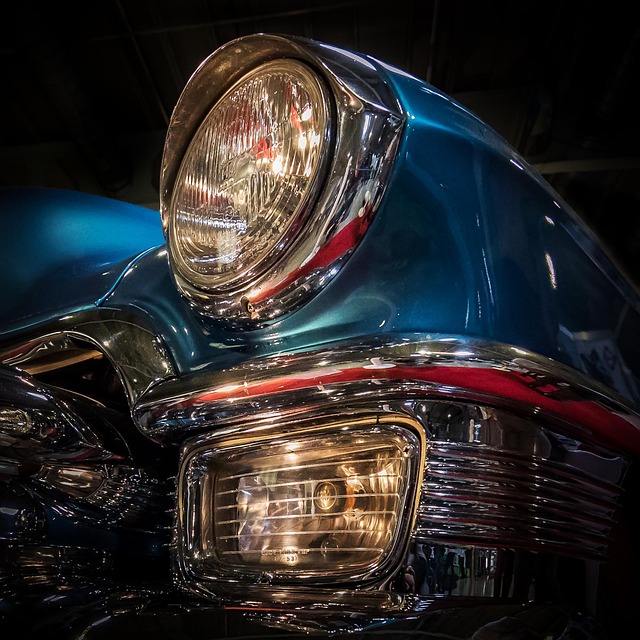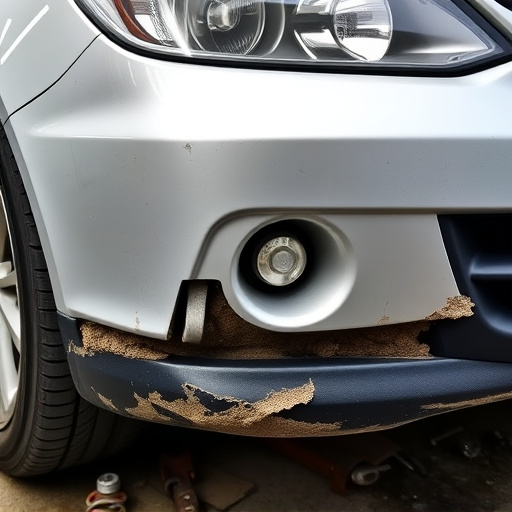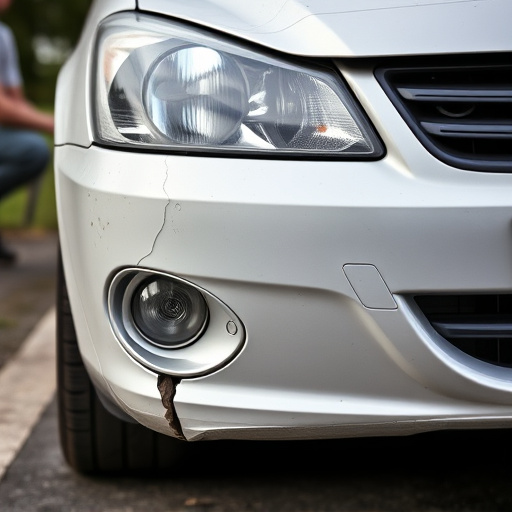Waterborne paint technology is revolutionizing the automotive industry by offering a safer, more efficient alternative to traditional painting methods. This eco-friendly system uses water as a solvent, eliminating VOCs and reducing air pollution. It provides superior coverage, faster drying times, enhanced adhesion, and durability, minimizing the need for extensive sanding and priming. Ideal for collision repair, fender repair, and car dent removal, this technology ensures restored vehicles maintain their fresh, glossy finish for extended periods while promoting environmental friendliness.
Waterborne paint technology is revolutionizing the industry by offering superior quality and performance compared to traditional paints. This innovative approach involves understanding and harnessing the benefits of water as a solvent, creating a composition that enhances durability and reduces environmental impact. By delving into the unique characteristics of waterborne paint, this article aims to highlight its advantages, from improved aesthetics to enhanced safety and sustainability features.
- Understanding Waterborne Paint Composition
- Advantages Over Traditional Paints
- Enhancing Durability and Environmental Impact
Understanding Waterborne Paint Composition
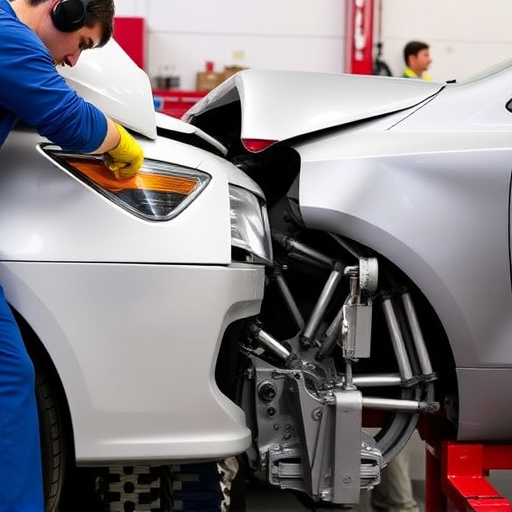
Waterborne paint technology is revolutionizing the automotive industry, particularly in areas like vehicle bodywork and car paint services. This innovative approach to painting involves the use of water as a solvent, replacing traditional organic solvents. The composition of waterborne paints includes a combination of pigment, resin, and additives suspended in water. Unlike conventional paints, these components are not dissolved in volatile organic compounds (VOCs), making them safer for both applicators and the environment.
The benefits of this technology extend beyond improved safety. Waterborne paint offers superior coverage, resulting in more consistent and durable finishes when used in automotive collision repair. Additionally, it exhibits excellent adhesion to various surfaces, ensuring a seamless blend with original vehicle bodywork. This advanced paint technology also promotes faster drying times, streamlining the painting process and enhancing overall productivity in car paint services.
Advantages Over Traditional Paints
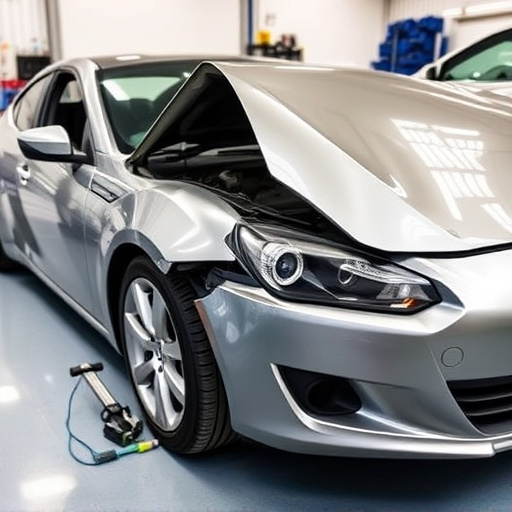
Waterborne paint technology offers several advantages over traditional paints, making it a preferred choice for various applications, including fender repair and car dent removal processes. One of the key benefits is its environmental friendliness. Unlike solvent-based paints, waterborne paints are less harmful to the planet due to their low or zero volatile organic compound (VOC) content. This means they produce fewer greenhouse gases and contribute less to air pollution during application and drying.
Additionally, these paints provide superior performance in terms of adhesion, durability, and color consistency. They adhere well to various surfaces, including metal, plastic, and composite materials commonly used in vehicle body repair. The technology allows for a more even and smooth finish, reducing the need for extensive sanding and priming typically required with traditional paints. This results in faster drying times, improved productivity, and cost-effectiveness in processes like car dent removal and fender repair.
Enhancing Durability and Environmental Impact
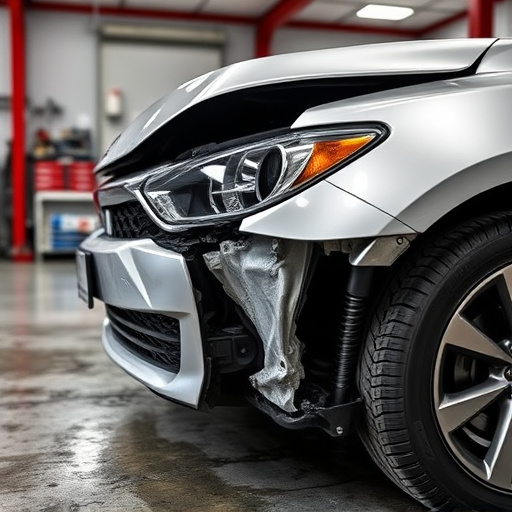
Waterborne paint technology is transforming the way we approach auto body repairs and restoration, offering significant advantages in terms of durability and environmental impact. This innovative approach leverages water as a solvent, reducing the use of volatile organic compounds (VOCs) commonly found in traditional paints. By eliminating or minimizing these harmful chemicals, waterborne paints contribute to cleaner air and a reduced carbon footprint, making them an eco-friendly option for both consumers and the industry.
In terms of durability, waterborne paint technology provides superior adhesion and resistance to chipping, fading, and cracking. This enhanced longevity is attributed to the advanced formulations that include resins and binders designed to withstand various environmental conditions. For auto body restoration projects, this means restored vehicles can maintain their fresh, glossy finish for longer periods, ensuring a higher quality aesthetic that stands the test of time.
Waterborne paint technology represents a significant advancement in the industry, offering improved durability and a reduced environmental impact compared to traditional paints. By understanding its unique composition and leveraging its advantages, professionals can achieve superior paint quality, ensuring long-lasting results while promoting sustainability. This innovative technology is a game-changer for various sectors, providing an eco-friendly alternative without compromising performance.

